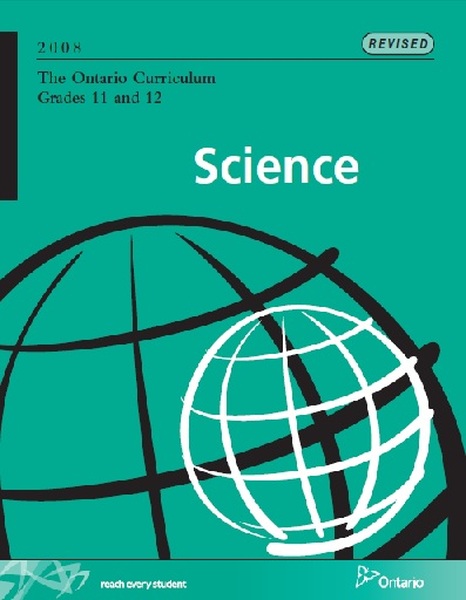CURRICULUM EXPECTATIONS

Science Cover. Retrieved from http://sharepdf.net/ assets/ontario-
curriculum-
grades-11-and-12-science.jpg
Overall Expectations
F1. Analyze, with reference to relativity, how the introduction of new conceptual models and theories can influence and/or change scientific thought and lead to the development of new technologies
F2. Investigate special relativity and solve related problems
F3. Demonstrate an understanding of the evidence that supports the basic concepts of Einstein’s theory of special relativity
Specific Expectations
F1.1 Analyze the impact of thought experiments on the development of the theory of relativity and assess how they changed scientific thought
F1.2 Assess the importance of relativity to the development of various technologies
F2.1 Use appropriate terminology related to special relativity, including but not limited to time dilation, and mass-energy transformation
F2.3 Solve problems related to Einstein’s theory of special relativity in order to calculate the effects of relativistic motion on time, length and mass
F2.4 Conduct a laboratory inquiry or computer simulation to analyze data that support a scientific theory related to relativity
F1. Analyze, with reference to relativity, how the introduction of new conceptual models and theories can influence and/or change scientific thought and lead to the development of new technologies
F2. Investigate special relativity and solve related problems
F3. Demonstrate an understanding of the evidence that supports the basic concepts of Einstein’s theory of special relativity
Specific Expectations
F1.1 Analyze the impact of thought experiments on the development of the theory of relativity and assess how they changed scientific thought
F1.2 Assess the importance of relativity to the development of various technologies
F2.1 Use appropriate terminology related to special relativity, including but not limited to time dilation, and mass-energy transformation
F2.3 Solve problems related to Einstein’s theory of special relativity in order to calculate the effects of relativistic motion on time, length and mass
F2.4 Conduct a laboratory inquiry or computer simulation to analyze data that support a scientific theory related to relativity
Essential QuestionsWhen do we need to consider relativistic effects?
Why are length, time and simultaneity considered relative and not absolute? How can we describe relativistic motion? How are the concepts of relativity used in everyday life? |
Big IdeasTime is relative to a person's frame of reference.
The effects of relativistic motion can be described mathematically. New theories can change scientific thought and lead to the development of new technologies. |
References
- Ontario Ministry of Education. (2008). The Ontario curriculum grades 11 and 12: Science.
